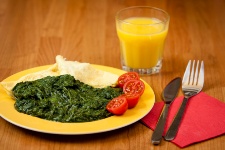 Colorectal cancer, or colon or bowel cancer as it’s commonly known, is a cancer from uncontrolled cell growth in the colon or rectum (parts of the large intestine). While more attention has been paid to this form of cancer in recent years, we’ve still got a long way to go in raising awareness of the disease.
Colorectal cancer, or colon or bowel cancer as it’s commonly known, is a cancer from uncontrolled cell growth in the colon or rectum (parts of the large intestine). While more attention has been paid to this form of cancer in recent years, we’ve still got a long way to go in raising awareness of the disease.
RECOMMENDED: Link Between High Blood Sugar and Colon Cancer Discovered
According to the American Cancer Society, colorectal cancer is one of the leading causes of cancer-related deaths in the U.S. The good news is that early diagnosis can often lead to a complete cure. As for preventative measures against the disease, diet seems to be key.
The role of dietary risk factors in colorectal cancer remains unclear, however. In recent health news, scientists at the Department of Internal Medicine, Seoul National University, decided to investigate the association between dietary intakes and colorectal adenomas. Adenomas are noncancerous tumors that, on rare occasions, develop into cancerous tumors.
The researchers conducted a study using data from individuals who had a colonoscopy at Seoul National University Hospital from October 2003 to December 2007. In all, 242 patients (162 males and 80 females) with confirmed colorectal adenoma, and 464 (272 males and 192 females) controls took part in the study.
Dietary data were obtained from the participants. The research team found that the total average energy intake of the patients was higher than the controls. High energy intake and animal protein intake were found to be associated with the risk of colorectal adenoma after adjusting for factors such as age, body mass index (BMI), waist circumference, metabolic syndrome, and smoking.
What does “high energy intake” mean? Basically, it means that a lot of calories are packed into a relatively small portion of food. Most junk food — high in both fats and sugar — falls into this category. An example of food with high energy density is ice cream, because all those calories from the sugar and fat fit into a small serving size. An example of a food with a low energy density? Spinach.
Try to follow this health advice: most of the time, you should be aiming for low-energy density foods. A few high-energy density foods are fine — but they shouldn’t be the main part of a meal!
